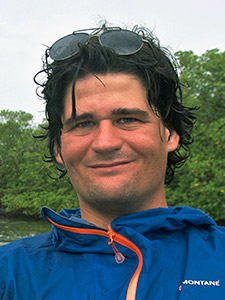PHILIP STAUDIGEL
RSMAS, University of Miami
The application of clumped isotopes in studying the post-depositional alteration of marine carbonates.
Abstract
After deposition, sediments and porewaters co-evolve during diagenesis, a process that takes place over a range of temperatures and depths, making its effects difficult to constrain. These processes can be further complicated by advection of fluids induced by benthic currents. In order to understand the effects these processes have, it is necessary to constrain the crystallization temperature, which has been made possible with recent advances in mass spectrometry. My intent is to apply this new temperature proxy towards studying two “classic” sites recovered by the ODP, as well as samples currently being recovered in the Maldives by IODP Expedition 359.
Biography
My attraction to geology and geochemistry grew out of a love of history and storytelling. As an undergraduate at UC Santa Cruz, my thesis project used carbonate isotope geochemistry to study climate variability in the early Eocene. During this project I was mentored by James Zachos, as well as a number of graduate students, many of whom were recipients of the Schlanger fellowship as well. This community of shared knowledge and experience encouraged me to continue research after graduating. During the year after graduation, I was graciously given access to a microscope allowing me me to work separating microfossils for a project under Robert Dunbar at Stanford. I am now pursuing a doctorate in marine geology from the University of Miami, studying the slow, but very important, chemical reactions that occur after carbonate materials are emplaced. Outside of the lab, I enjoy biking, skiing, and kayaking around the warm waters of South Florida.







